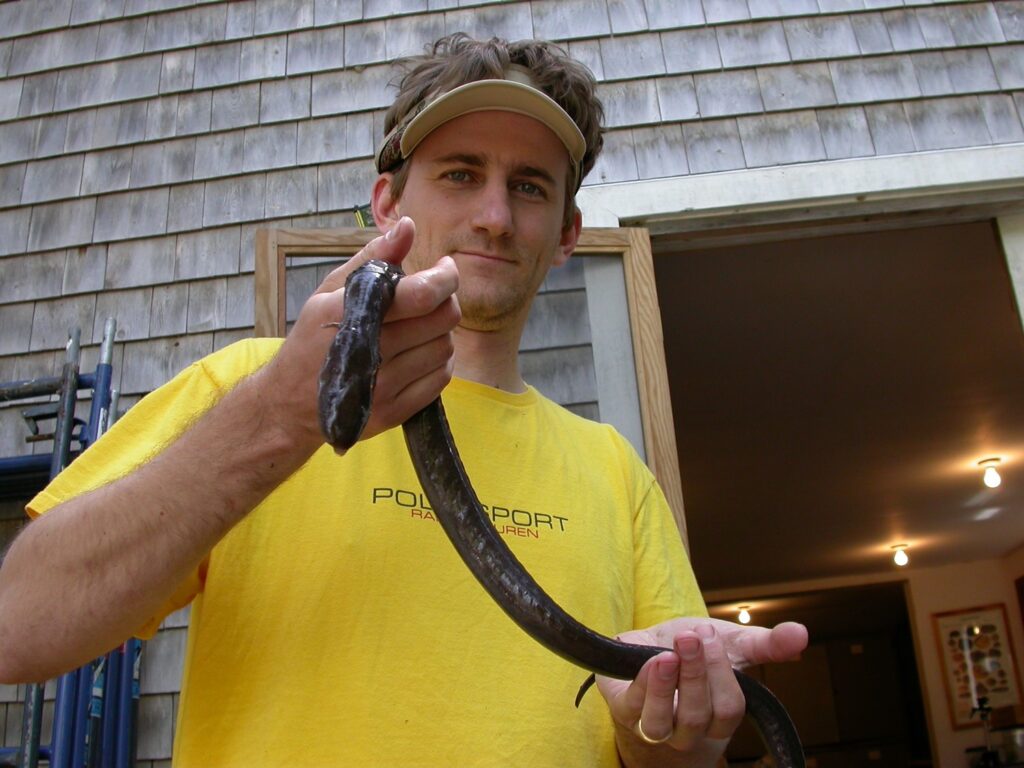We’re finishing our three-part series of wild staff animal encounters this week with one from the Director of Field Conservation himself, Bryan Windmiller, featuring one very interesting and very lost amphibian.
“I have spent a great deal of time surveying for reptiles and amphibians in many areas of New England and have caught a few species that are not normally found on any state lists, including a very large false map turtle in Concord, MA (the species is native mostly to the lower Mississippi River watershed) and a newly metamorphosed African clawed frog in a pond in the Acton Arboretum. However, the oddest herp species that I’ve encountered in New England turned up in one of the region’s least diverse areas, the cool and boggy coast of far Downeast Maine, where I was teaching a week-long course on field methods for studying amphibians and reptiles.”
“Before the start of the class in early May, 2006, I was setting traps for salamanders and turtles in backwaters of the Narraguagus River in Cherryfield, Maine with my assistant, Bowdoin College laboratory technician and excellent herpetologist Jaret Reblin. One day, after setting traps by canoe and returning to the canoe launch, Jaret was removing gear from boat when he exclaimed: “Hey, an eel.” He reached into the cold water and picked up a two-foot long thin, slowly-squirming animal and held it in the air. Having had a fair bit of experience sampling fish in the region, and well-knowing that it is almost impossible to causally pick up a live American eel of that size and hold it still (their amazing slime coat makes it insanely hard to hold them in your hand), I proclaimed from 10 yards away, “that can’t be an eel, Jaret,” and ran over to take a look.”
“Sure enough, the creature had two tiny little vestigial forelegs, each with wee 2-toed feet. Jaret had just found Maine’s first and only record of a bizarre and wonderful salamander, the two-toed amphiuma (Amphiuma means), native to the Atlantic and Gulf of Mexico coastal plains from Louisiana to Virginia. I have no idea how this poor creature found itself in a bloody cold river in Downeast Maine in the beginning of May, but have often speculated that some keen young Maine amphibian fan had purchased the animal from a dodgy online animal supply company, only to have their parents demand that they dump the beast in a nearby river immediately. However he (it was a male) got there, Angus the amphiuma, as I named him, is still well remembered by state biologists in Maine, who have yet to find a second record for that species. I kept Angus for about one year in an aquarium at home, where my kids delighted in watching him suck down large bullfrog tadpoles with an audible pop that he made when he rapidly expanded his throat, propelling the hapless tadpole to its doom far faster than our eyes could follow. Sadly, this was Angus’s undoing, as he ultimately choked to death on a tadpole that was just a bit too large. R.I.P. to the largest salamander ever recorded in Maine.”

